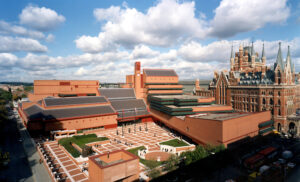As part of our ongoing “Women in Architecture” series, we’re spotlighting a trailblazing yet often forgotten leader in architecture, Lady Elizabeth Wilbraham. While it was nearly impossible for women to professionally pursue architecture throughout their life in the 17th century, Wilbraham is often considered the first woman architect in the United Kingdom’s history. Learn more about her storied life and career below:
The Life of Elizabeth Wilbraham
Elizabeth Wilbraham was born into a wealthy family in Staffordshire, England, on February 14, 1632. At 19, she married Thomas Wilbraham, heir to the Baronetcy of Wilbraham. Following their marriage, the couple traveled across Europe for their honeymoon, and because of her interest in architecture, she took it upon herself to make the trip an extended architecture tour.
On their trip, the couple conversed with several significant architectural leaders of the time. She met Pieter Post, a Dutch Golden Age Architect in the Netherlands, studied Andrea Palladea’s work in Italy and fell in love with the Stadtresidenz in Germany before returning to the United Kingdom, where her mostly unseen career began.
Notable Works and Achievements
While there is a lack of evidence that clearly links Wilbraham’s involvement as a formal architect at the time, it is clear that she held a great interest in architecture and was a considerable patron of architecture throughout the 17th century. However, historians continue to argue that she managed to practice architecture secretly and was likely involved in the design of more than a dozen grand homes for her extended family, including Weston Park, Staffordshire and a chapel at Woodley, Chesire.
John Millar, an American historian, claims that Wilbraham could have contributed designs to more than 400 buildings across the United Kingdom during her lifetime, using male assistant architects to supervise and take credit for the projects due to her social position.
Wilbraham is also credited for not only tutoring Christopher Wren, one of England’s most highly acclaimed architects but contributing designs for 18 of the 52 churches he commissioned following the Great Fire of London in 1666, most of which share unique design features Wilbraham included in countless other builds.
In a time when women couldn’t find themselves in any professional setting, Elizabeth Wilbraham did what no others did at the time and pursued her passion through a professional lens. And even though she completed much of her work behind closed doors and credit was given elsewhere, her legacy as a major patroness of architecture, and possibly even the first women architect in the United Kingdom, remains.




